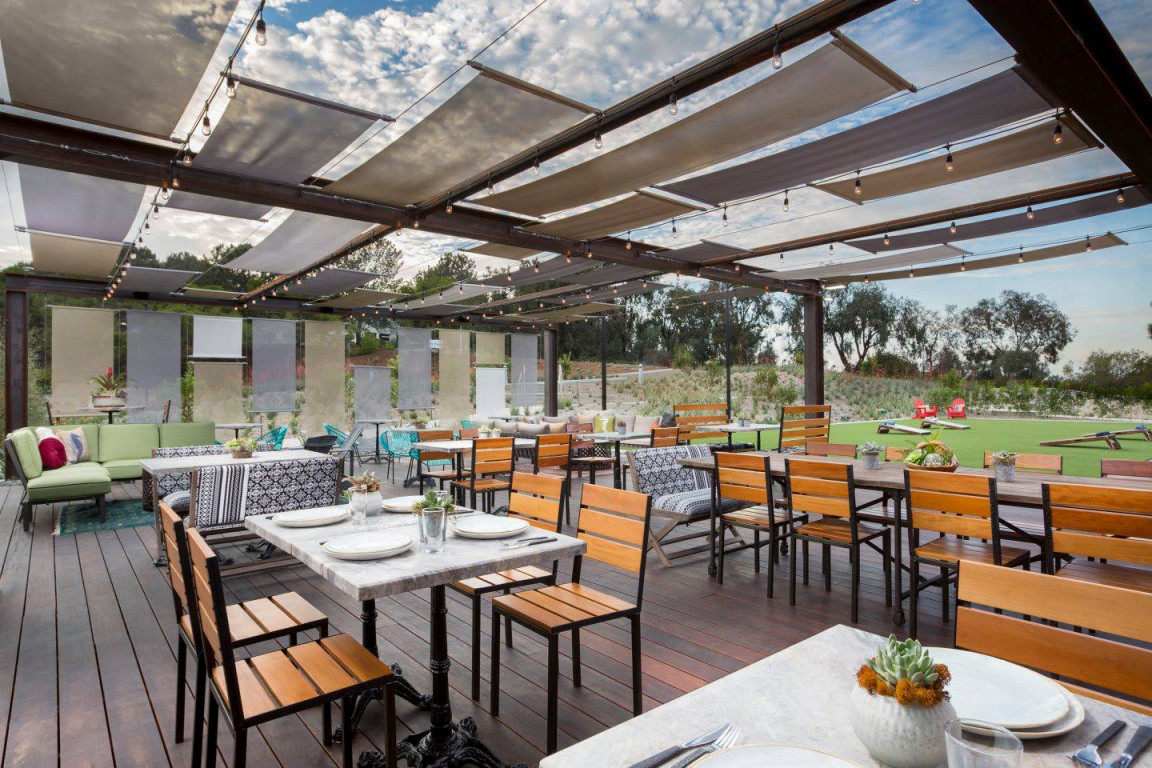Farmer And The Seahorse: A Unique Tale Of Coexistence And Conservation
Imagine stumbling upon something so extraordinary in your daily life that it changes how you see the world. The story of the farmer and the seahorse is one of those incredible tales that remind us of the delicate balance between humans and nature. This isn’t just about farming or marine life; it’s about understanding the interconnectedness of ecosystems and how small actions can lead to big impacts. So, buckle up because we’re diving deep into this fascinating narrative.
Now, you might be wondering, what does a farmer have to do with a seahorse? At first glance, it seems like an odd pairing, right? But here’s the kicker: these two seemingly unrelated worlds collide in a way that teaches us valuable lessons about sustainability and conservation. The farmer and the seahorse story isn’t just cute—it’s crucial for our planet’s future.
This article aims to explore the relationship between land and sea, farmers and marine creatures, and how their collaboration can pave the way for a more sustainable world. So, whether you’re a nature lover, a curious reader, or someone who wants to learn more about coexistence, this is the place to be. Let’s dive in!
Read also:Penn State Barstool Your Ultimate Guide To The College Sports Phenomenon
Table of Contents
- Background: Understanding the Farmer and the Seahorse Connection
- Biography: Who Are These Incredible Individuals?
- Ecosystem Balance: Why This Matters
- The Farmer’s Role in Conservation
- Why Seahorses Are Important
- Challenges Faced by Both Parties
- Solutions and Initiatives
- Data and Statistics: The Reality Check
- The Impact of Collaboration
- The Future: What Lies Ahead
Background: Understanding the Farmer and the Seahorse Connection
Alright, let’s start by setting the scene. Picture this: a small coastal village where agriculture meets the sea. Farmers work tirelessly to cultivate their lands, providing food for their families and communities. Meanwhile, just off the shore, seahorses gracefully sway with the currents, playing their part in maintaining the marine ecosystem.
What brings them together? Well, it turns out that the health of the land directly affects the health of the sea. Runoff from farms, pollution, and unsustainable practices can harm marine life, including our beloved seahorses. On the flip side, healthy marine ecosystems contribute to better soil quality and biodiversity on land.
This connection isn’t just theoretical; it’s real, and it’s happening right now. Farmers and marine conservationists are joining forces to create a harmonious relationship between land and sea. And guess what? It’s working!
How Did It All Begin?
Let’s rewind a bit. The story of the farmer and the seahorse began when local farmers noticed a decline in their crop yields. At the same time, marine biologists observed a decrease in seahorse populations. After some digging (pun intended), they realized that the issues were interconnected.
Here’s the kicker: excessive use of fertilizers and pesticides on farms was washing into the ocean, creating dead zones where marine life couldn’t survive. Seahorses, being sensitive creatures, were hit hard by this pollution. This realization sparked a movement towards sustainable farming and marine conservation.
Biography: Who Are These Incredible Individuals?
Before we dive deeper, let’s take a moment to meet the key players in this story. On one side, we have the farmers—hardworking individuals who rely on the land for their livelihood. On the other side, we have the seahorses—tiny but mighty marine creatures that play a vital role in the ecosystem.
Read also:Amber Rose Sexy Photos A Journey Into Her Iconic Moments And Style
Meet the Farmers
Our farmers come from diverse backgrounds, but they share a common goal: to provide for their families while protecting the environment. They’ve embraced new techniques like organic farming and agroforestry, which not only improve crop yields but also reduce pollution.
| Name | Location | Specialization | Years of Experience |
|---|---|---|---|
| John Carter | Coastal Village A | Organic Farming | 25 years |
| Maria Santos | Coastal Village B | Agroforestry | 15 years |
| David Kim | Coastal Village C | Sustainable Irrigation | 10 years |
Meet the Seahorses
Seahorses may be small, but they pack a punch when it comes to ecosystem services. They help control pest populations, maintain coral reefs, and even inspire scientific research. There are over 50 species of seahorses worldwide, each with its own unique characteristics.
Some fun facts about seahorses:
- They’re the only species where males give birth!
- They can change color to blend in with their surroundings.
- They have no teeth or stomach, relying on their long snouts to suck in food.
Ecosystem Balance: Why This Matters
So, why should we care about the relationship between farmers and seahorses? It’s all about ecosystem balance. When one part of the system is disrupted, it affects everything else. Think of it like a domino effect—knock one piece over, and the rest follow.
For example, if seahorse populations decline, it could lead to an increase in pest species, which would then harm crops. Conversely, if farmers use sustainable practices, they can help protect seahorses and other marine life, creating a win-win situation.
The Ripple Effect
The impact of this relationship extends beyond just farmers and seahorses. It affects local communities, global biodiversity, and even climate change. By working together, we can create a more resilient and sustainable world.
The Farmer’s Role in Conservation
Now, let’s talk about the farmers. They’re on the front lines of this conservation effort, implementing practices that benefit both land and sea. Here are some ways they’re making a difference:
- Using organic fertilizers instead of chemical ones.
- Implementing buffer zones to prevent runoff into the ocean.
- Practicing crop rotation to maintain soil health.
These actions not only help protect seahorses but also improve crop yields and reduce costs for farmers. It’s a win-win situation that proves conservation and profitability can go hand in hand.
Challenges Faced by Farmers
Of course, it’s not all sunshine and rainbows. Farmers face numerous challenges, including:
- Limited access to resources and education.
- Resistance from traditional farming communities.
- Climate change impacts on crop yields.
Despite these hurdles, they continue to push forward, driven by a passion for sustainability and a desire to leave a better world for future generations.
Why Seahorses Are Important
Let’s shift our focus to the seahorses. These tiny creatures may not seem like much, but they play a crucial role in maintaining the health of marine ecosystems. Here’s why:
- They help control pest populations, keeping ecosystems in balance.
- They provide food for larger marine species, supporting the food chain.
- They inspire scientific research and innovation.
Moreover, seahorses have cultural significance in many parts of the world, symbolizing love, loyalty, and resilience. Their presence in our oceans is a reminder of the beauty and complexity of nature.
Threats to Seahorses
Unfortunately, seahorses face numerous threats, including:
- Habitat destruction due to pollution and coastal development.
- Overfishing for traditional medicine and aquarium trade.
- Climate change impacts on ocean temperatures and acidity.
Addressing these threats requires a collaborative effort between farmers, marine conservationists, and policymakers.
Challenges Faced by Both Parties
As with any relationship, there are challenges. Farmers and seahorses face obstacles that test their ability to coexist peacefully. Here are some of the biggest hurdles:
- Conflicting interests between agriculture and marine conservation.
- Limited funding and resources for sustainable practices.
- Resistance from stakeholders who prioritize short-term gains over long-term sustainability.
However, these challenges are not insurmountable. With the right support and collaboration, they can be overcome.
Solutions to Overcome Challenges
Here are some potential solutions:
- Increased funding for sustainable farming and marine conservation initiatives.
- Education and awareness campaigns to promote the importance of ecosystem balance.
- Policy changes that incentivize sustainable practices and penalize harmful ones.
By working together, we can create a future where farmers and seahorses thrive side by side.
Data and Statistics: The Reality Check
Let’s take a look at some data to understand the scope of the problem and the potential for solutions:
- Over 15 million seahorses are traded globally each year for traditional medicine and aquariums.
- Approximately 30% of coral reefs have been destroyed, affecting seahorse habitats.
- Sustainable farming practices can reduce agricultural runoff by up to 50%.
These numbers paint a clear picture of the challenges we face, but they also highlight the potential for positive change.
Where Do We Go From Here?
The data tells us that action is needed, and fast. But it also shows that solutions exist, and they’re within our reach. It’s up to us to take that next step.
The Impact of Collaboration
When farmers and seahorses work together, the results can be astounding. Here are some examples of successful collaborations:
- Community-led initiatives that combine farming and marine conservation.
- Research projects that study the relationship between land and sea ecosystems.
- Policy changes that support sustainable practices and protect marine life.
These efforts not only benefit farmers and seahorses but also create a ripple effect that improves the lives of countless others.
Stories of Success
Let’s hear from some of the people making a difference:
- John Carter: “Switching to organic farming wasn’t easy, but it’s been worth it. My crops are healthier, and I know I’m helping protect the seahorses that live just off the shore.”
- Maria Santos: “Agroforestry has transformed my farm. I’m producing more while using fewer resources, and I’m proud to be part of a movement that’s making a difference.”
These stories show that change is possible, and it starts with small actions.
The Future: What Lies Ahead
So, what does the future hold for the farmer and the seahorse? The possibilities are endless. As more people become aware of the importance of ecosystem balance, we can expect to see increased collaboration and innovation.
Here are some potential developments:
- New technologies that help farmers monitor and reduce their environmental impact.
- Expanded marine protected areas that safeguard seahorse habitats.
- Global initiatives that bring together stakeholders from all sectors to work towards a common goal.
The future is bright, but it requires action from all of us. Whether you’re a farmer, a marine biologist, or just someone who cares about the planet, you have a role to play in this story.
Call to Action
So, what can you do to help? Here are a few ideas:
- Support sustainable farming and marine conservation initiatives.
- Spread awareness about the importance of ecosystem balance.
Julie Brister: The Rising Star Redefining Creativity In The Modern Era
Michelle Lamerely: The Rising Star Redefining Beauty Standards
Sara Scaperrotta: The Rising Star In The Entertainment World

Farmer and the Seahorse La Jolla, San Diego, California, United

Farmer and the Seahorse La Jolla, San Diego, California, United

FARMER & THE SEAHORSE Updated May 2024 1704 Photos & 916 Reviews